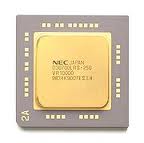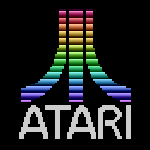Using Unix makes perfect sense to me. Back then what other options did you have? Windows? Don't think so, compared to Irix, Windows was a joke and some (a lot?) still thinks that, even though I don't agree I sure can understand that sentiment.
I started out making computer generated graphics and 3Danimations back in the 80s on the Amiga, so I guess I'm quite old. So lusting after real-time 3D capable workstations is only natural for me, since it was basically the holy grail for me and many others. PCs back then was something you didn't even look at as a serious option for 3D work, same thing with Macs. I do admit I was quite the fanboy then, but for good reasons. Remembering the good laughs at people trying to convince you of the Macs so called graphical prowess at local graphic expos in the 80s and early 90s, but the PCs where even worse.
Of course I had heard about those almost mythical/legendary computers called Silicon Graphics back then, but never seen one in person. But then in 93/early 94 I think (maybe earlier, memory isn't that good any more, lol), I visited a friends friend (which is a dear friend of mine today, and the best 3D artist I know of) workplace and he used Softimage 3D on an Indigo, think it was using the Elan or XZ graphics, and when I saw that beautiful computer handling all those nurbs in realtime I was in heaven, and when he switched over to shaded mode I almost passed out. So, yeah, that did make one deep impression on me.
Eventually I end up working on PCs running windows, and I did some work infront of an Octane (which was awesome) in one of my jobs and had access to several Intergraph computers, but never owned one myself. So in the end, PC killed Amiga (well, maybe commodore and greed did that) and in the end SGI. Funny, isn't it? People in general doesn't care, and why should they, for most a computer is a computer no matter what drives it, as long as it does what it should, noone today gives a rats ass if it says Dell, HP, Mac (well, except Mac fanatics and fanboys) or SGI on the front.
So while todays computers are silly fast and basically can do anything faster than you can say compute, I can with a hindsight, using my old SGIs running Irix, say that some things where actually better in the past. Too bad I never actually had the funds to own one back then.
Sorry for the long rant, but maybe gives an insight to how I became a fan of Silicon graphics, and I'm sure there are many stories like that among the other members of this fine forum.
I started out making computer generated graphics and 3Danimations back in the 80s on the Amiga, so I guess I'm quite old. So lusting after real-time 3D capable workstations is only natural for me, since it was basically the holy grail for me and many others. PCs back then was something you didn't even look at as a serious option for 3D work, same thing with Macs. I do admit I was quite the fanboy then, but for good reasons. Remembering the good laughs at people trying to convince you of the Macs so called graphical prowess at local graphic expos in the 80s and early 90s, but the PCs where even worse.
Of course I had heard about those almost mythical/legendary computers called Silicon Graphics back then, but never seen one in person. But then in 93/early 94 I think (maybe earlier, memory isn't that good any more, lol), I visited a friends friend (which is a dear friend of mine today, and the best 3D artist I know of) workplace and he used Softimage 3D on an Indigo, think it was using the Elan or XZ graphics, and when I saw that beautiful computer handling all those nurbs in realtime I was in heaven, and when he switched over to shaded mode I almost passed out. So, yeah, that did make one deep impression on me.
Eventually I end up working on PCs running windows, and I did some work infront of an Octane (which was awesome) in one of my jobs and had access to several Intergraph computers, but never owned one myself. So in the end, PC killed Amiga (well, maybe commodore and greed did that) and in the end SGI. Funny, isn't it? People in general doesn't care, and why should they, for most a computer is a computer no matter what drives it, as long as it does what it should, noone today gives a rats ass if it says Dell, HP, Mac (well, except Mac fanatics and fanboys) or SGI on the front.
So while todays computers are silly fast and basically can do anything faster than you can say compute, I can with a hindsight, using my old SGIs running Irix, say that some things where actually better in the past. Too bad I never actually had the funds to own one back then.
Sorry for the long rant, but maybe gives an insight to how I became a fan of Silicon graphics, and I'm sure there are many stories like that among the other members of this fine forum.








 ...
...

 -
-




















 (single-CM)
(single-CM)



